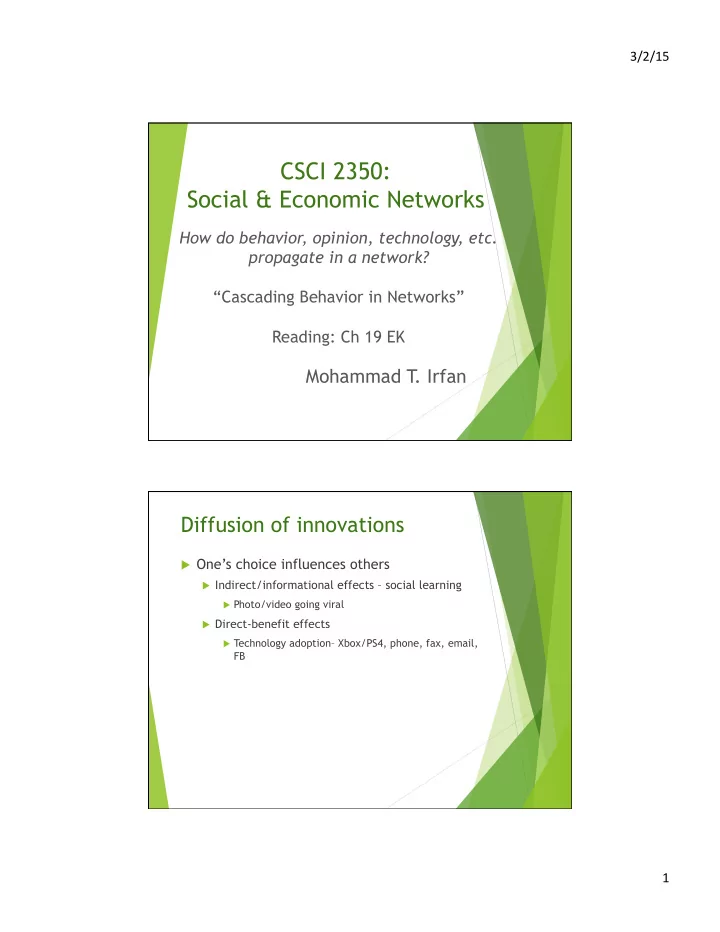

3/2/15 ¡ CSCI 2350: Social & Economic Networks How do behavior, opinion, technology, etc. propagate in a network? “Cascading Behavior in Networks” Reading: Ch 19 EK Mohammad T . Irfan Diffusion of innovations u One’s choice influences others u Indirect/informational effects – social learning u Photo/video going viral u Direct-benefit effects u Technology adoption– Xbox/PS4, phone, fax, email, FB 1 ¡
3/2/15 ¡ Examples u Adoption of hybrid seed corn in Iowa u Ryan and Gross, 1943 u Adoption of tetracycline by US doctors u Coleman, Katz, and Menzel, 1966 u Shared ingredients u Indirect effects u Adoption was high-risk, high-gain u Early adopters had higher socioeconomic status u Social structure was important– visibility of neighbors’ activity Success factors of diffusion u Diffusion of Innovations – Everett Rogers (1995) u Complexity u Observability u Trialability u Compatibility 2 ¡
3/2/15 ¡ #TheDress (February 2015) 3 ¡
3/2/15 ¡ Today u What leads to widespread diffusion? u Modeling diffusion u Connection with the things we know u Homophily u Clustering u The strength of weak ties 4 ¡
3/2/15 ¡ First model u “Contagion” – Stephen Morris, 2000 Diffusion vs. strength of weak ties u Weak ties are conveyors of information u But cannot “force” adoption of behavior Would Align with own community 5 ¡
3/2/15 ¡ Diffusion vs. clustering u Assuming a threshold of q, cascade will be incomplete if and only if there is a cluster of density > 1-q in the “remaining network” u Cluster density: A fraction s.t. each node in the cluster has at least that fraction of neighbors in it density = 2/3 > 1-q for q = 2/5 More general model u Linear threshold model – Granovetter, 1978 6 ¡
Recommend
More recommend